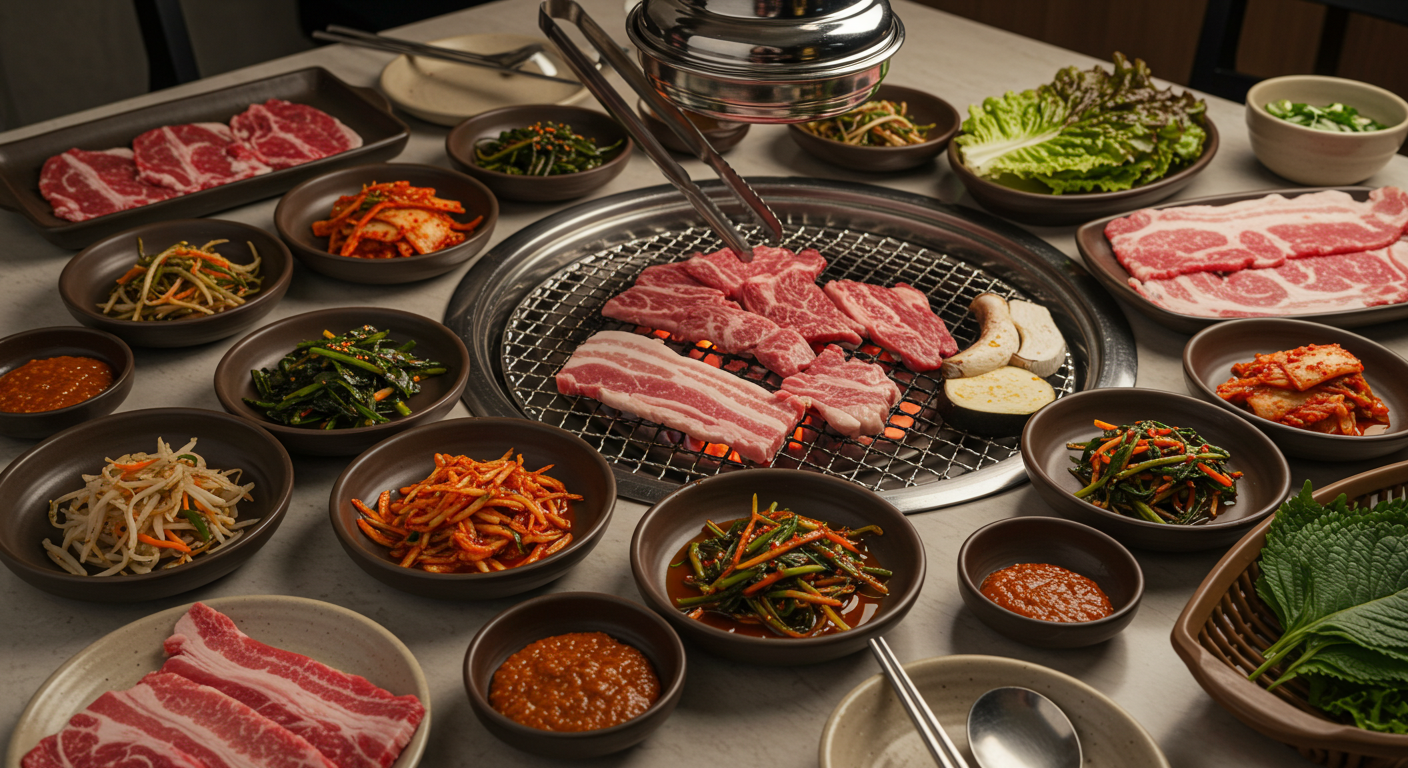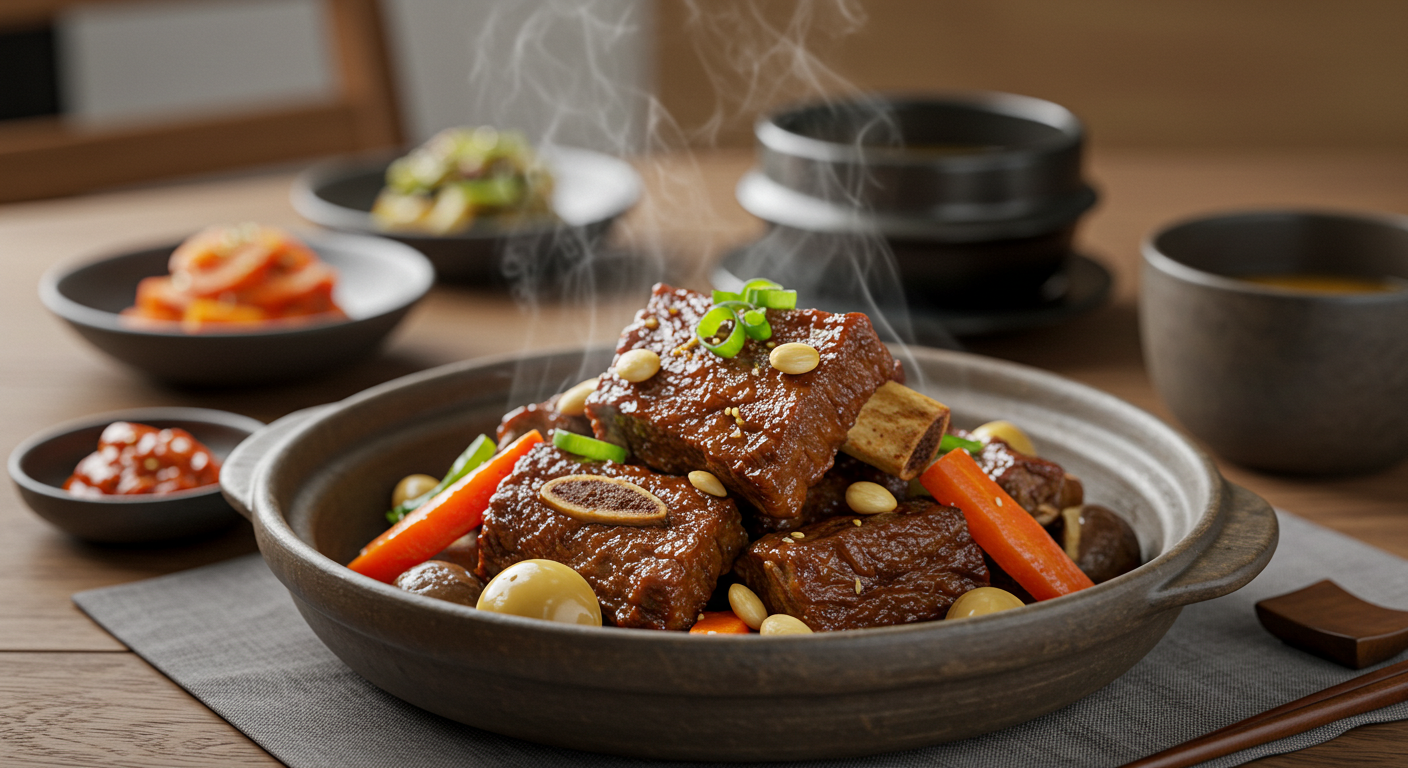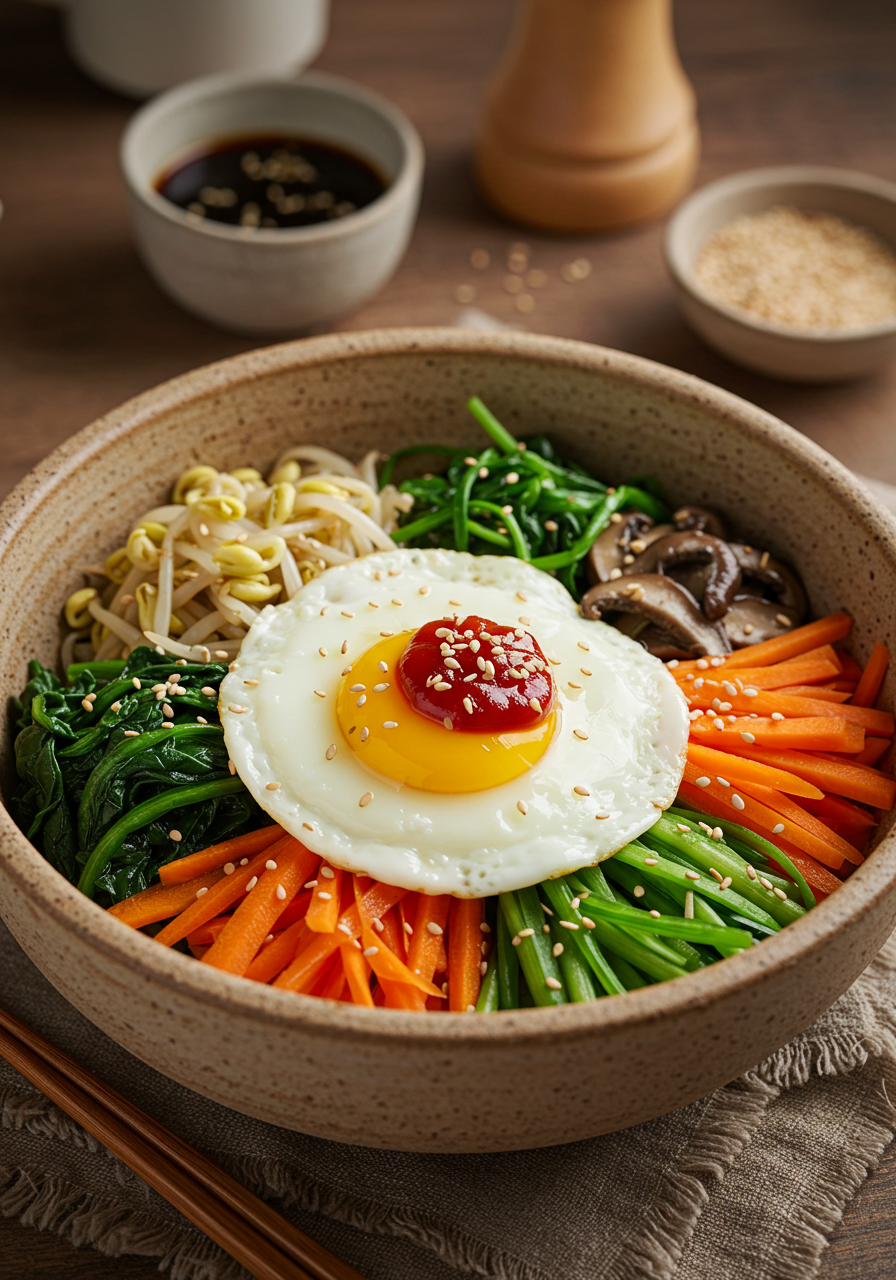
Your Guide to Making Perfect Bibimbap at Home! Discover how to easily create this iconic Korean healthy dish right in your kitchen. Bibimbap might seem complicated, but you’re about to become a master!
Hello everyone! Are you curious about Korean food (Bibimbap Recipe)? I’ve had the pleasure of trying various Korean dishes during my travels, and among them, Bibimbap truly stands out as a captivating dish. With its vibrant array of ingredients served in one bowl, it’s packed with nutrition and absolutely delicious! 😊
But I bet you’re thinking, “Making Bibimbap at home sounds pretty complicated, right?” I felt the same way at first. The thought of preparing so many ingredients seemed daunting. However, it’s actually much simpler than you might imagine, and you can create a fantastic Bibimbap with ingredients you already have in your fridge. Today, I’m excited to share my easy-to-follow Bibimbap recipe, perfect for anyone outside of Korea to try!
Bibimbap: What Exactly Is It? 🤔
Bibimbap literally means ‘mixed rice’. It’s a traditional Korean dish where warm rice is topped with various seasoned vegetables (namul), meat, a fried egg, and a dollop of spicy-sweet gochujang (Korean chili paste). All these ingredients are then mixed together thoroughly before eating. The fresh flavors of each ingredient combined with the savory, slightly spicy gochujang create a truly harmonious and delicious experience. It’s truly one of the best healthy and tasty meals you can have! You can learn more about its history here.
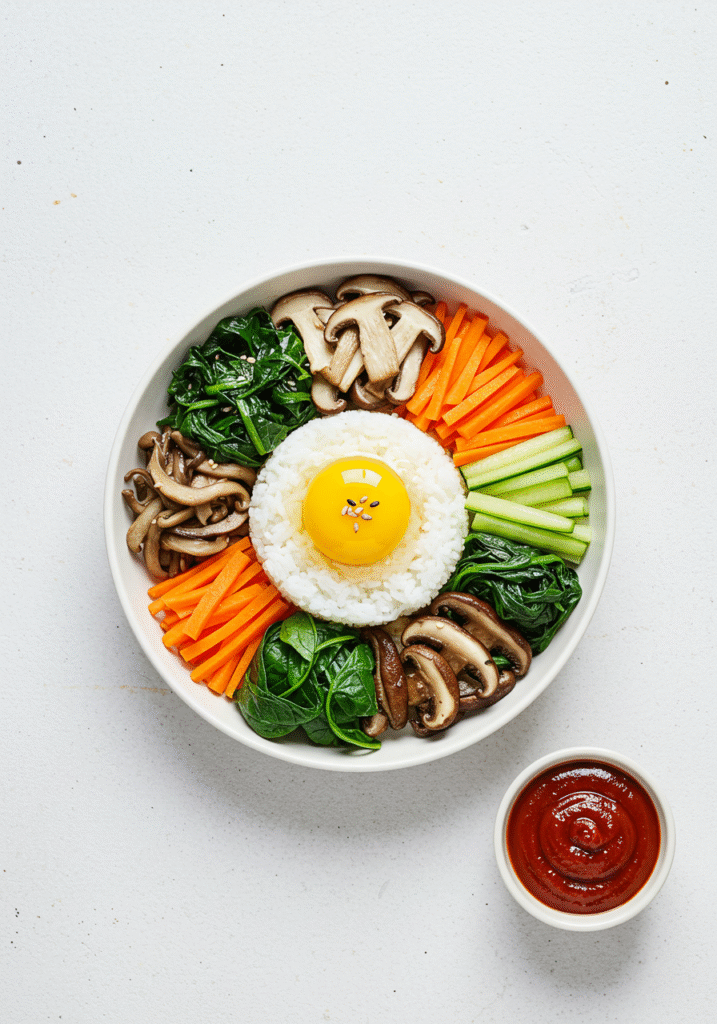
Essential Ingredients for Bibimbap recipe! 🍳
There isn’t a strict rule for Bibimbap ingredients, but these are commonly used and make for a great base. Feel free to add or omit based on what you have in your fridge!
- Rice: White rice or multi-grain rice (serve warm!)
- Vegetables (Namul): Spinach, bean sprouts, mung bean sprouts, fernbrake (gosari), bellflower root (doraji), etc. (Each should be lightly seasoned with salt and sesame oil.)
- Meat: Ground beef or thinly sliced beef (bulgogi style), chicken, etc. (Marinate and stir-fry with soy sauce, sugar, garlic, and sesame oil) – If you’re vegetarian, mushrooms are a great substitute!
- Egg: Fried egg (a runny yolk is the best! 🍳)
- Other Vegetables: Carrots, zucchini, mushrooms (julienned and stir-fried), cucumber, etc.
- Key Sauce: Gochujang (Korean Chili Paste)! You can find out more about gochujang here.
- Additional Toppings: Sesame oil, sesame seeds, dried seaweed flakes (gim-garu).
💡 Good to know!
It’s best to cook or season each vegetable separately to maintain their distinct flavors and textures, which enhances the overall taste of Bibimbap. If it feels like too much work, just preparing bean sprouts and spinach is perfectly fine!
Super Simple Step-by-Step Bibimbap! 📝
- Step 1: Prepare the Rice
Place warm white or multi-grain rice in a large bowl. It’s best if the rice is a bit firm, not too sticky, for better mixing. - Step 2: Cook the Vegetables (Namul)
- Spinach: Blanch, squeeze out excess water, then season with a pinch of salt, sesame oil, and a tiny bit of minced garlic. Mix well by hand.
- Bean Sprouts/Mung Bean Sprouts: Boil in salted water, rinse with cold water, drain, and season like spinach.
- Carrots/Zucchini/Mushrooms: Julienne them and stir-fry each separately in a pan with a little cooking oil and salt until tender-crisp.
- Step 3: Cook the Meat
Marinate ground beef (or sliced meat) with soy sauce, sugar, minced garlic, and sesame oil. Stir-fry in a pan until cooked through. Done! - Step 4: Fry an Egg
Heat some oil in a pan and fry an egg. A runny yolk is truly delicious when mixed into Bibimbap! - Step 5: Arrange Beautifully
Place the rice in your bowl, then artfully arrange the prepared vegetables, meat, and fried egg on top, separating them by color. Put a generous spoonful of gochujang in the center. - Step 6: Mix and Enjoy!
Drizzle a bit of sesame oil and sprinkle some sesame seeds. Then, use your spoon to mix everything together thoroughly. See? It’s super easy!
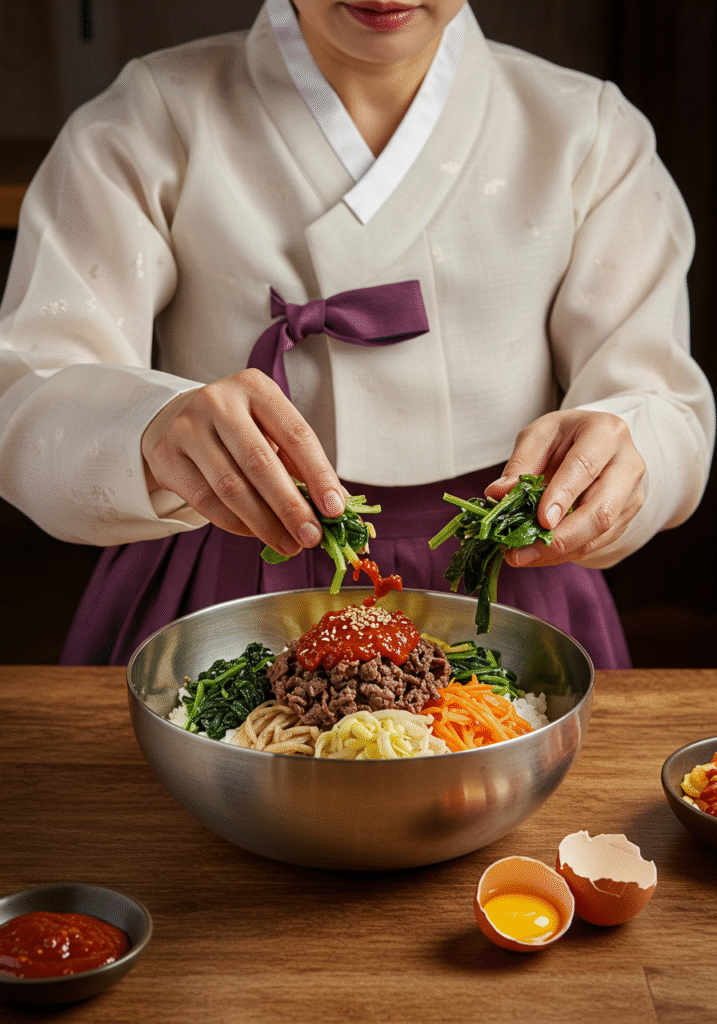
⚠️ Be careful!
Don’t overcook or over-blanch the vegetables, as this can make them mushy and reduce nutrient content. Start with a small amount of gochujang and add more gradually to adjust the spice level to your liking.
Tips for an Even More Delicious Bibimbap! ✨
Make Your Own Bibimbap Sauce 🌶️
Store-bought gochujang is fine, but making your own sauce can add a deeper flavor. Here’s a golden ratio for you!
- 3 tablespoons Gochujang
- 1 tablespoon Sugar
- 1 tablespoon Sesame Oil
- 0.5 tablespoon Minced Garlic
- 0.5 tablespoon Vinegar (optional, for a tangy kick)
- 1-2 tablespoons Water (for consistency adjustment)
Just mix all these ingredients well, and you’re done! You can add some roasted sesame seeds for extra flavor if you like.
Key Takeaways from This Post 📝
So, what did you think? Bibimbap is simpler than it looks, right? We’ve explored how to easily and deliciously make this iconic Korean healthy dish at home. It might have seemed complex, but you now know it’s made up of very simple steps. The key points for making Bibimbap are as follows:
- Ingredient Preparation: Prepare various fresh ingredients like vegetables, meat, and eggs, but feel free to be flexible based on what’s available in your fridge.
- Individual Cooking: It’s important to cook each vegetable and meat separately to preserve their unique flavors and textures.
- Gochujang Sauce: The gochujang sauce dictates the taste of your Bibimbap! Mix basic gochujang with sugar, sesame oil, garlic, and more to create your own signature sauce.
- Mixing: Beautifully arrange all ingredients on top of the rice, then mix thoroughly with sesame oil for a healthy and delicious meal.
Honestly, at first, I also thought, “When will I ever make all of this?” But once I tried it, I felt so proud, and it tasted amazing! I really encourage all of you to give it a try. You can easily make it by yourself, or it can be a fun activity to do with friends or family. 😊
💡
Bibimbap: No Longer Intimidating !
Key Ingredients: Rice, vegetables, meat, egg, gochujang! Your fridge likely has what you need.
Cooking Principle: Cook each ingredient separately to enhance flavor and texture.
Your Own Sauce:
Gochujang + Sugar + Sesame Oil (+ Garlic, Vinegar)
Ease of Use: A healthy, delicious meal that’s quicker and easier to make than you think!
How about Bibimbap for dinner tonight? 😊
Frequently Asked Questions ❓
Q: Are there any must-have ingredients for Bibimbap?
A: Not strictly, but rice, gochujang, and sesame oil are usually considered fundamental. Common vegetables include spinach, bean sprouts, mung bean sprouts, and a fried egg. Beef is a popular meat choice, but vegetarians can substitute with mushrooms or other plant-based options.
Q: What if the gochujang is too spicy for me?
A: You can reduce the spiciness and add sweetness by incorporating a bit more sugar or honey. Adding extra sesame oil, or a touch of minced garlic or soy sauce, can also help. Alternatively, try using a milder homemade gochujang sauce instead of a store-bought one!
Q: It’s tedious to cook each vegetable separately. Can I stir-fry them all together?
A: Yes, if you’re really short on time or have limited ingredients, you can stir-fry them together. However, to truly bring out the unique flavors, aromas, and textures of each vegetable, it’s recommended to cook them separately. If you have the time, give individual cooking a try!
Q: What kind of rice is best for Bibimbap?
A: Generally, fluffy white rice that isn’t too sticky is ideal for mixing and blends well with the ingredients. However, for health benefits, brown rice or multi-grain rice can also be used. Just be careful not to make the rice too mushy, as it can negatively affect the Bibimbap’s texture.
How was that? Bibimbap is simpler than you thought, isn’t it? I hope this post serves as a great guide for your first Bibimbap-making adventure. 😊 If you have any more questions, feel free to ask in the comments below!


